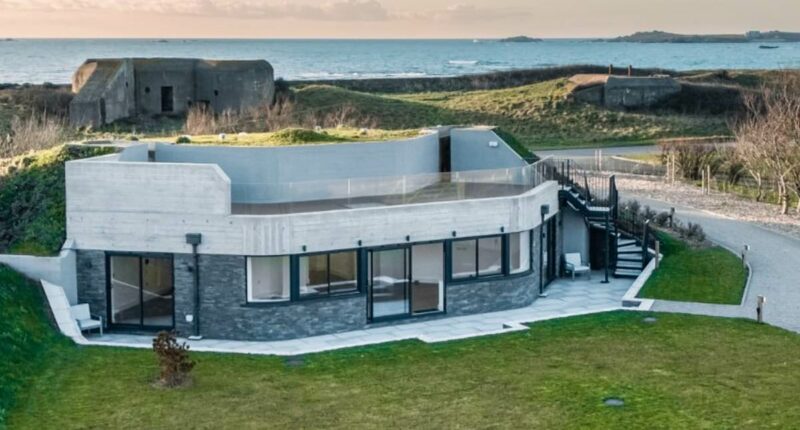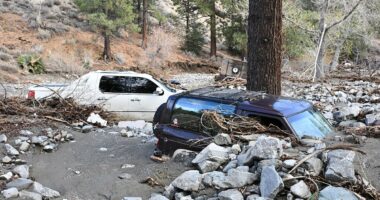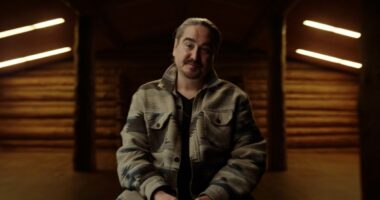Share this @internewscast.com
In June 1940, the Allied forces were defeated in France.
The UK government decided the Channel Islands would be too costly to defend and began evacuating military personal and equipment.
Prime Minister Winston Churchill reportedly hesitated to abandon the oldest British crown possession but ultimately gave in to military advisors’ reasoning.
Thousands of residents of the channel island fled to mainland Britain to avoid the incoming Nazis.
On Alderney, the northernmost of the main Channel Islands, most of the 1,400 locals departed from the island, which spans just three square miles.
Many people evacuated from the larger Guernsey and Jersey but a large portion of the population opted to stay.

Alderney commandant Oberst Schwalm Germany surrenders to Brigadier Alfred Ernest Snow after Nazi Germany’s defeat in 1945
The Nazis were unaware that the Allied forces had ceased defending the islands, and within two weeks, they commenced reconnaissance flights over the shores.
In total, 44 islanders were killed in a sequence of raids on the ports by the Luftwaffe.
The Nazis soon occupied the islands, which became the only part of the British Empire conquered by the German Army.
German authorities changed the time zone from GMT to CET in line with the rest of the Third Reich.
German occupation also saw the island change to driving on the right hand side of the road.
Residents were forced to sell their cars and houses; speak German in schools; give up weapons, boats and cameras; and had limited access to beaches.
Hitler believed the occupation of the islands had value as a propaganda tool. As a result, they became heavily fortified.
Hitler sent one-twelfth of the steel and concrete used in the Atlantic Wall defence network to go to the Channel Islands.
The islands became some of Europe’s most densely fortified areas, featuring numerous Hohlgangsanlage tunnels, casemates, and coastal artillery positions.

Group of German soldiers coming from the Channel Island of Alderney
Forced labour camps were built on some of the islands, with so-called volunteer camps springing up on Guernsey and Jersey.
This forced labour led to the creation of bunkers, gun emplacements, air raid shelters, and concrete fortifications.
In 1942, camps on Alderney, called Sylt and Norderney, were built to hold a few hundred forced labourers.
However, a year later, on March 1, 1943, they came under the control of SS-Untersturmführer Maximillian List, converting them into concentration camps.
He was followed by SS-Obersturmführer Georg Braun in March 1944. Both were veteran members of the Nazi party. According to archival records, List ordered the ‘security to treat the prisoners harshly,’ and Braun was ‘brutal to excess.’
The labourers were forced to build coastal defences as part of Hitler’s ‘Atlantic Wall’ and it is thought 20 per cent of the camp’s population died in the first four months alone.
Sylt concentration camp was closed in 1944 and the SS destroyed much of it to hide their crimes.
During D-Day on June 6, 1944 the British troops bypassed the heavily armoured islands.
It took until May 9 1945 for the Nazis on the islands to surrender, 24 hours after VE day for most of Europe.
Guernsey and Jersey were liberated by British troops and ships on this day. Sark was liberated on 10 May 1945, and the German troops in Alderney surrendered on 16 May 1945. Prisoners of war were removed from Alderney by 20 May 1945.
Alderney was the last German garrison to surrender following the conclusion of the war.















